In the early days of the Open Era, tennis’ crown jewel, Wimbledon, was very much up for grabs on a regular basis. In the first eight editions of the Championships after tennis became “open,” there were six different champions, including five in a row from 1971 to 1975. There was no one champion who could rule the lawns of the All-England Club.
Enter Bjorn Borg.
In the 1970s, it was extremely rare for players to have success on the clay of the French Open and the grass of Wimbledon. By 1976, the 20-year-old from Sweden had already won two titles in Paris with consistent, grinding baseline play, but little was expected of him on the slick grass across the channel. But when the Swede arrived in London in 1976, he set out on a run that would change tennis forever.
1976: Domination Begins
Borg was by no means weak on grass before 1976. In his three previous appearances at the All-England Club, he had reached the quarterfinals twice. While the Swede was a dominant force on the clay of Paris because of his consistent baseline shots and unrivaled fitness, he was underrated on the grass. The Swede was not afraid to serve and volley or charge the net and attack with his surprisingly strong volleys. In 1976, he finally found a way to perfectly translate his game to the grass.
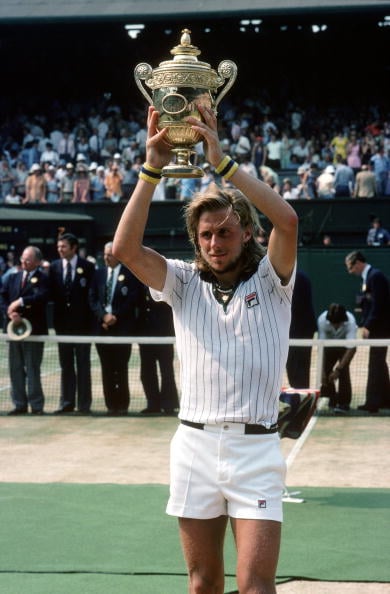
At no point at the All-England Club in 1976 was Borg really challenged. The Swede would cruise into the final without dropping a set. He was barely even pushed in any of those matches, only requiring more than 6 games to win a set twice. In the final, he met one of the strongest players of the early 1970s, Ilie Nastase. But the two-time major champion and former Wimbledon runner-up was no match for Borg, as he would barely put up a fight until the third set as the 20-year-old would claim his first Wimbledon crown.
1977: Holding Off Challengers
When Borg returned to defend his title in 1977, he was playing his first major competition of the season of skipping the Australian Open (which he almost always did) and the French Open. Throughout the fortnight, Borg appeared to show some signs of rust and faced some serious challenges. It started in the second round when he fell behind two sets to love to former Australian Open champion Mark Edmondson. The Swede would battle back to win in five but that would just be the beginning.
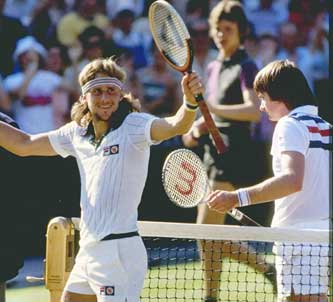
After crushing Nastase again in the quarterfinals, he had to battle through a back-and-forth semifinal with Vitas Gerulaitis. The pair traded the first two sets before the Swede did what he did best, ground out a lengthy fifth set 8-6 to reach the final. He faced another test in the form of American superstar Jimmy Connors in the final. Borg would drop the opening set before bouncing back to take the next two. Connors, the 1974 champion, did not let the reigning champion out of his sight, breaking late to send the match to a decider. But Borg was not to be denied, wrapping up the fifth set to successfully defend his title.
1978: King of All Surfaces
For the first time in his career, Borg came into Wimbledon in 1978 having just won the French Open. Only six men in history had won the French Open and gone on to win Wimbledon that same year. Even though he was coming into Wimbledon in good form, he got off to a slow start, falling behind two sets to one in his first round match. He was then pushed to four sets in the third round.
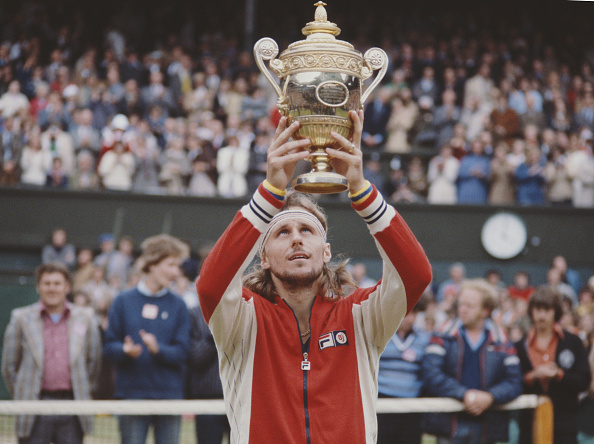
After dropping three sets through his first three matches, the Swede caught fire. He would roll through the remainder of the draw, not dropping a set and only being pushed past six games twice. In the final, he had a rematch with Connors but this time, there was no epic. Borg was dominant from start to finish, crushing his rival with the loss of only seven games to complete his first channel slam.
1979: Back-to-Back Channel Slams
For the second year in a row, Borg was coming off a French Open title and was looking to become the first man to complete the channel slam in consecutive years. He was in trouble early, however, dropping the opening sets of his first two matches, needing five sets to get through his second round match. He needed four sets again to get through the fourth round before scoring routine wins in the quarter and semifinals.
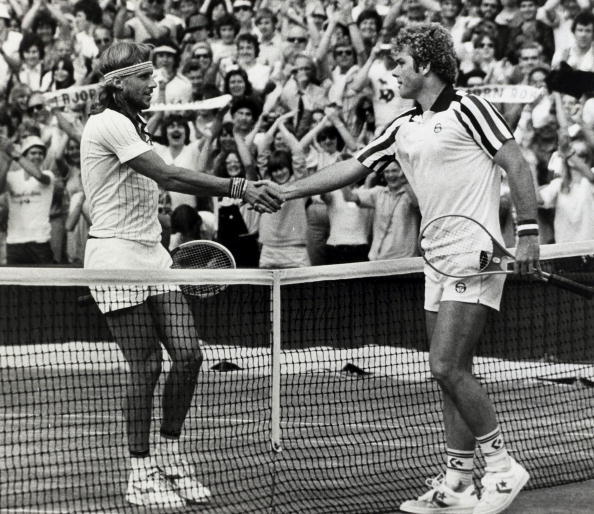
The final would prove to be one of the toughest tests he would face at Wimbledon. He found himself up against the powerful serving Roscoe Tanner. The American used his raw power to assault the Swede, taking the first two sets. But outlasting Borg remains one of the toughest tests in the history of tennis. Tanner could not keep up that level, eventually being outworked over a tough five-setter.
1980: War with McEnroe and the Greatest Match Ever Played
Seeking a third consecutive channel slam, Borg was strong from the get-go for the once. He cruised into his fifth consecutive final, only dropping two sets, both being the second set and both times bouncing back to win the last two easily. The Swede had a fairly easy run, only needing to face one other seeded player before the final.
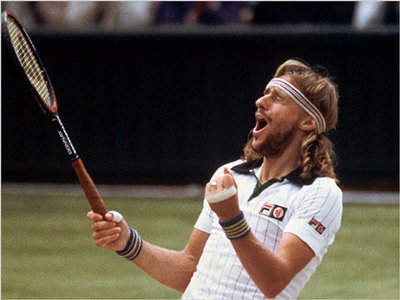
In the final, he found himself up against his greatest rival, John McEnroe. The match that followed was, at the time, the greatest battle the tennis world had ever seen. Up against McEnroe’s net assault, Borg struggled early, dropping the first set in a hurry. He would rally to take the next two sets before fighting into a tiebreak in the fourth. The tiebreak that followed was one for the ages. Five times in that breaker, Borg stood a point away from victory, but McEnroe denied him every time, eventually taking the tiebreak 18-16 to send the match to a deciding set. In the final set, the Swede did what he did best. He buckled down and out-grinded his opponent, breaking the American for a historic fifth straight title 8-6 in the fifth.
Borg’s run would finally be ended a year later when he fell to McEnroe in the final. His five straight titles at a single major remain a record that he shares with Roger Federer (Wimbledon and US Open) and Rafael Nadal (French Open). The Swede’s dominance at the All-England Club sealed in his place in history as one of the greatest champions in the history of the sport.









































